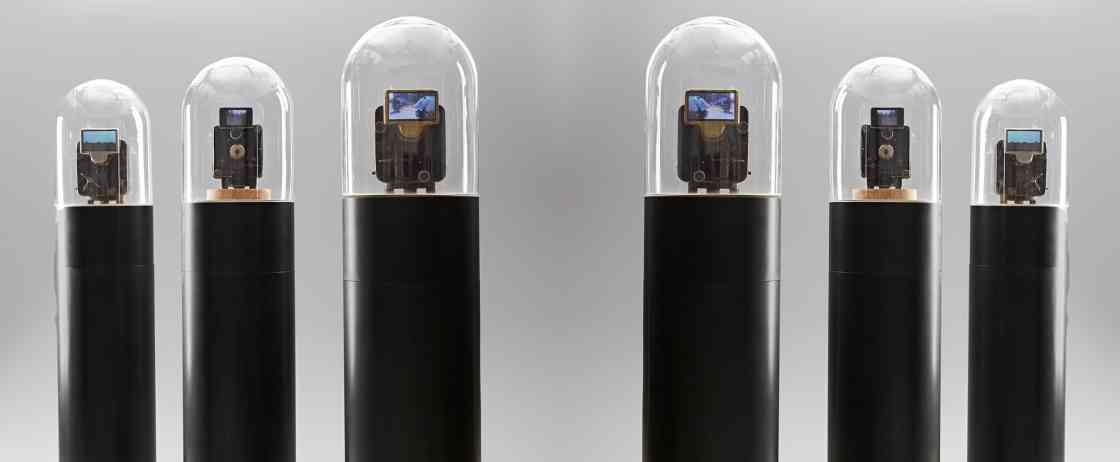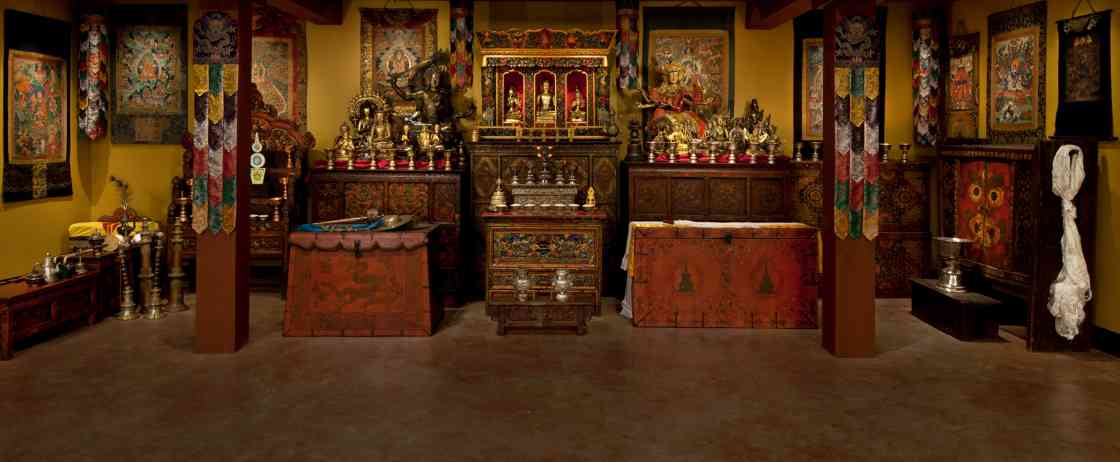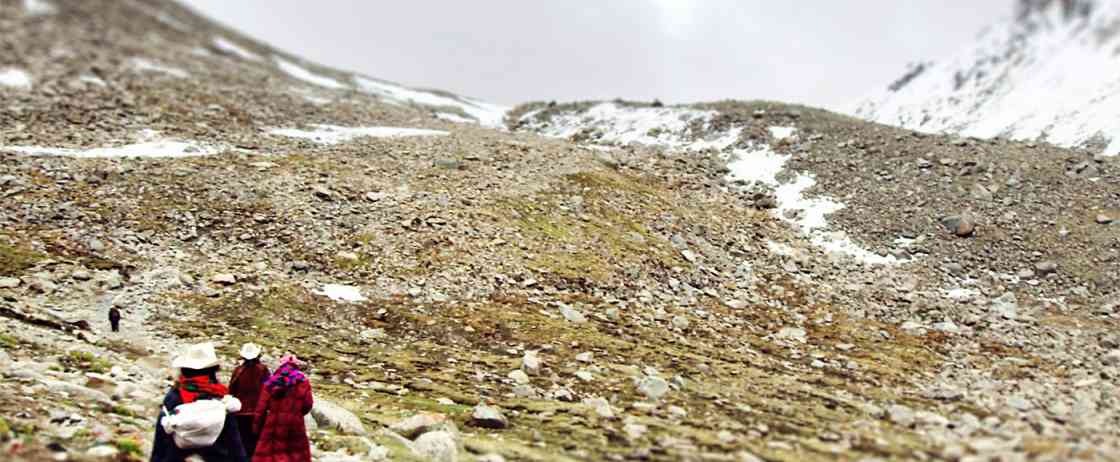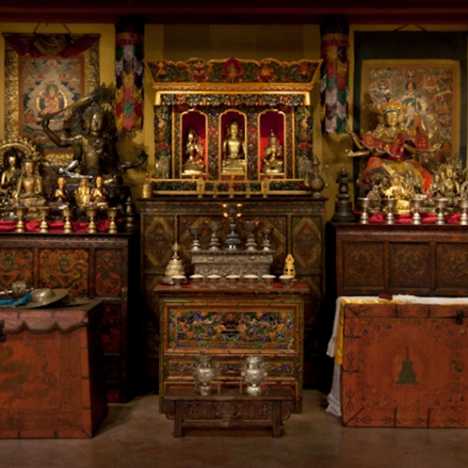
What spaces are sacred to you? Some sacred spaces are public, like a religious holy site or your community’s house of worship. Others are private, like a personal sanctuary for finding peace and concentration. Regardless of where they are or what they look like, the relationships we build with these sacred spaces inform how we think about ourselves and relate to the rest of the world.
The Rubin’s ongoing exhibition Sacred Spaces invites visitors to reflect on devotional activities in awe-inspiring places. This iteration, The Road To…, focuses on the act and action of pilgrimage for the benefit of one’s future self.
The Road to Sanchi
In The Road to Sanchi, artist Ghiora Aharoni transforms obsolete taxi meters with video screens that capture his travels to sacred sites throughout India for Hindus, Jews, Muslims, and Buddhists. One such site is Sanchi, which is famous for its Great Stupa built over relics of the Buddha and is considered one of the most important sites in Buddhism. Sanchi and the other sacred sites are never seen, making the journeys a vehicle for examining the prism of time and the act of pilgrimage for the viewer. They also express India’s history of cultural plurality and the natural commingling of sacred and secular in India today.
Kora and Saga Dawa
The videos Kora and Saga Dawa, created by Jawshing Arthur Liou, explore the vernacular and sacred aspects of Tibetan Buddhist ritual and celebration, as they take place in the breathtaking environment around Tibet’s holiest mountain, Mount Kailash. Challenging the distinction between landscape, sacred site, and personal devotional practice, Liou’s work invites the viewer to contemplate the significance of place in spiritual practice, and how pilgrimage cultivates intimacy with literal place, self-discovery, and the divine. The videos will be shown in succession, beginning with Kora.
The Tibetan Buddhist Shrine Room
An ongoing focal point of Sacred Spaces, the Shrine Room is an immersive installation inspired by traditional Tibetan household shrines. Customarily such a space would be used for devotional practices, elaborate offerings, prayer, and contemplation through engagement with sculptures, paintings, and ritual objects. Each iteration of the Shrine Room features a specific Tibetan Buddhist tradition—this time the Sakya tradition.

This exhibition is made possible by Bob and Lois Baylis, Matt and Ann Nimetz, Christopher J. Fussner, The 2009 Hoch Charitable Lead Trust, Tulku Tsultrim, Audio-Technica, and contributors to the 2017 Exhibitions Fund.
Image Credits
Ghiora Aharoni, The Road to Sanchi, 2016, vintage Indian taxi meters with screens displaying videos by the artist filmed in Sanchi, Nizamuddin West, Varanasi, and Mattancherry, India, as installed in the artist’s studio; each 55 inches high x 11 5/8 inches in diameter; ©2016 Ghiora Aharoni
Jawshing Arthur Liou, Kora (video still), 2011–2012, video installation, courtesy of the artist.
Plan your visit
Send Your Comments
Comments are moderated, and will not appear on this site until the Rubin has approved them.




